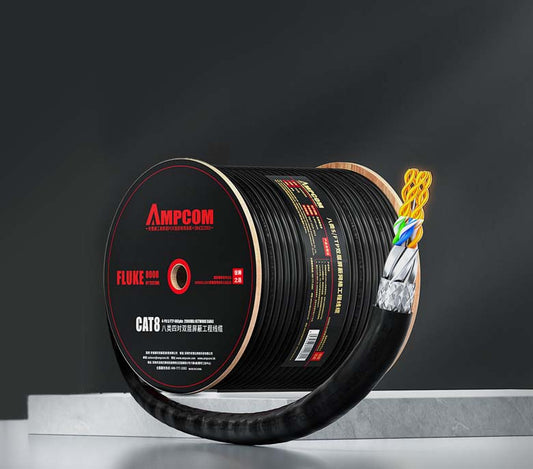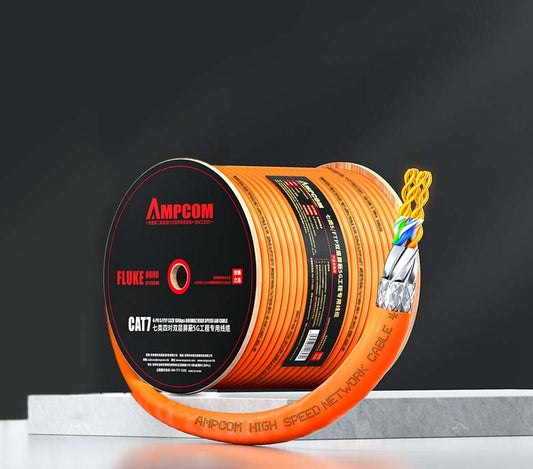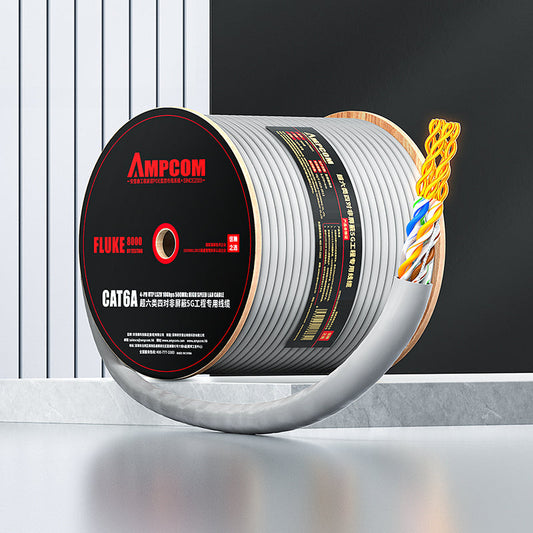NBASE-T (2.5G/5G) over Cat5e/Cat6: Real-World Limits & Upgrade Paths
How far can 2.5G over Cat5e and 5G over Cat6 really go? What holds them back in the field? This guide turns 802.3bz theory into practical rules so you can upgrade without re‑cabling.
Last updated:
TL;DR
- 2.5G over Cat5e: commonly stable to 100 m in clean office wiring; shorten runs if bundles are hot or noisy.
- 5G over Cat6: commonly stable to 100 m; on Cat5e it may range 45–100 m depending on quality, bundling, and EMI.
- Biggest field limiters: alien crosstalk in tight/hot bundles, EMI near power, poor terminations, and thin patch cords under high‑power PoE.
- Upgrade path: keep horizontal Cat5e/Cat6, deploy multi‑gig (802.3bz) switches/NICs, tidy patching, and validate with spot tests.
What Is NBASE‑T (802.3bz)?
NBASE‑T is the industry term for 2.5GBASE‑T and 5GBASE‑T, standardized as IEEE 802.3bz. It raises 1 Gbps links to 2.5 Gbps or 5 Gbps over existing Cat5e/Cat6 cabling using the same RJ45 connectors. It reuses techniques from 10GBASE‑T at lower frequencies for better noise margin and power.
Real‑World Distance Expectations
| Link | Common Reach | Assumptions |
|---|---|---|
| 2.5G over Cat5e | up to ~100 m | Well‑installed cabling, moderate bundles, low EMI |
| 5G over Cat6 | up to ~100 m | Cat6 channel with good terminations |
| 5G over Cat5e | ~45–100 m | Highly dependent on cable quality, bundling heat, and interference |
These are practical ranges. Your exact results depend on installation quality, temperature, and electromagnetic environment. When in doubt, shorten runs and test.
Environment Matrix (Distance vs. Conditions)
| Conditions | 2.5G over Cat5e | 5G over Cat6 | 5G over Cat5e |
|---|---|---|---|
| Clean office: cool pathway, small bundles, minimal EMI | ≈100 m stable | ≈100 m stable | ~70–100 m (cable quality matters) |
| Warm bundles: tight groupings, elevated temps (server closets), moderate PoE | ~70–100 m | ~80–100 m | ~45–80 m; prefer Cat6 for 5G |
| High EMI: parallel to power, motors/LED drivers, RF sources | ~60–100 m; consider STP and separation | ~70–100 m; shielding/grounding recommended | ~45–70 m; shorten &/or use shielded links |
Matrix values are indicative and assume compliant channels. Improve margin by shortening patching, reducing bundle density/temperature, separating from power, and ensuring quality terminations.
What Actually Limits 2.5G/5G in the Field?
1) Alien Crosstalk in Dense Bundles
In tightly bundled cables—especially in warm pathways—inter‑cable coupling (alien crosstalk) increases errors. Reduce bundle size, separate high‑utilization runs, and prefer higher‑category cords for critical links.
2) EMI/RFI Near Power & Motors
Running parallel to power conduits, LED drivers, or motors can inject noise. Keep separation, cross at 90°, and consider shielded patching where EMI sources are unavoidable.
3) Termination & Patch Quality
Poor crimp/untwist at jacks hurts return loss and crosstalk. Use quality factory‑terminated patch cords; for high‑power PoE, avoid very thin cords in hot bundles.
4) Length & Gauge
Longer channels and thinner conductors increase attenuation and heat rise under PoE. Where possible, shorten patching and use thicker conductors (e.g., 24 AWG) for high‑load devices.
Recommended Upgrade Paths
- Survey existing cabling: map lengths, categories, bundle routes, and EMI risks. Note any legacy flat/CCA cords for replacement.
- Deploy multi‑gig switches/NICs: choose ports that support 1G/2.5G/5G/10G autonegotiation for flexible rollout.
- Tidy patching: minimize jump lengths, avoid tight coils, and separate from power supplies.
- Validate: spot‑test representative links. If a run negotiates only 1G, try shorter/thicker patch cords or relocate from noisy bundles.
- Plan for 10G backbones: where consistent 10G is required, standardize Cat6a in new work while keeping NBASE‑T at the edge.
PoE Voltage Drop & Thermal Examples
PoE current increases conductor heating and voltage drop. Shorter, thicker patch cords (e.g., 24 AWG) keep margin for higher‑power devices. The quick estimates below use typical copper resistance at 20 °C and illustrate trend rather than exact device limits.
| Conductor Gauge (AWG) | Approx. loop R @ 5 m* | PoE+ (~0.3 A / conductor) | PoE++ (~0.45 A / conductor) |
|---|---|---|---|
| 24 AWG | ≈0.256 Ω | ≈0.08 V drop | ≈0.12 V drop |
| 26 AWG | ≈0.408 Ω | ≈0.12 V | ≈0.18 V |
| 28 AWG | ≈0.653 Ω | ≈0.20 V | ≈0.29 V |
*Loop resistance considers the forward + return conductors in a pair. Stranded patch cords and higher temperatures increase resistance. Copper’s temp coefficient is ~0.39%/°C; a +10 °C rise adds ~4% resistance.
Practical tips
- Keep patch cords as short as practical; avoid tight coils and hot bundles.
- For high‑power PoE (bt), prefer 24 AWG patching and spread bundles for airflow.
- Mixing slim 28 AWG cords? Limit lengths and avoid stacking many high‑load devices on the same bundle.
- When voltage margin is tight, relocate PSE/PD or upgrade the cord gauge instead of forcing longer runs.
Can’t Negotiate 2.5G/5G? Try This Flow
- Patch sanity check: replace with a short, quality 24 AWG factory cord; avoid flat/CCA cords.
- Bundle & EMI: move the run away from power/LED drivers; reduce bundle density; cross power at 90°.
- Terminations: inspect jacks for untwist/exposure; re‑terminate if needed; verify shield continuity if STP.
- Device settings: update switch/NIC firmware; ensure Auto‑Negotiation and multi‑gig (802.3bz) are enabled.
- Re‑test & segment: if negotiation still falls to 1G, shorten the channel or re‑route away from noise; consider Cat6a for persistent problem links.
Where NBASE‑T Shines
- Wi‑Fi 6/6E/7 APs: uplinks beyond 1G without pulling new cable.
- Campus/SMB access: incremental upgrades per closet while reusing existing Cat5e/Cat6.
- Media & workstations: faster file moves where 10G is overkill.
FAQs
Is NBASE‑T the same as 802.3bz?
Yes. NBASE‑T is a common term for the IEEE 802.3bz 2.5GBASE‑T and 5GBASE‑T standards.
Can Cat5e run 5G?
Sometimes. Many Cat5e channels can do 5 Gbps at shorter distances and low noise, but it’s not as reliable as Cat6 for full‑reach runs.
Why does my link only negotiate 1G?
Typical causes: hot/tight bundles (alien crosstalk), EMI near power, poor terminations, very long channels, or thin cords under high PoE. Shorten patching, separate from power, and re‑test.
Do I need shielded cords for NBASE‑T?
Only when you face EMI sources or parallel power. Otherwise UTP is simpler and sufficient. If you choose STP, ensure proper grounding end‑to‑end.
How does NBASE‑T fit Wi‑Fi 6/6E/7?
Most APs exceed 1 Gbps aggregate throughput but not 10G. NBASE‑T (2.5/5G) uplinks match access‑point demand without re‑cabling.
Do I need new patch panels or wall jacks?
No, if existing components are within spec and in good condition. Poor/aged terminations can limit performance—inspect and re‑terminate as needed.
Can link aggregation (LACP) replace NBASE‑T?
Two 1G links can add capacity for multiple flows, but a single flow remains limited to 1G. NBASE‑T raises single‑flow speed to 2.5G or 5G.
Are flat Ethernet cables OK?
They often compromise pair geometry and RL/NEXT. Prefer round, standards‑compliant patch cords—especially for multi‑gig and PoE.
Next Steps
Rolling out NBASE‑T? Start with critical APs or workstations, validate a few representative links, and standardize patching practices. Keep new backbone runs Cat6a‑ready for 10G growth.



